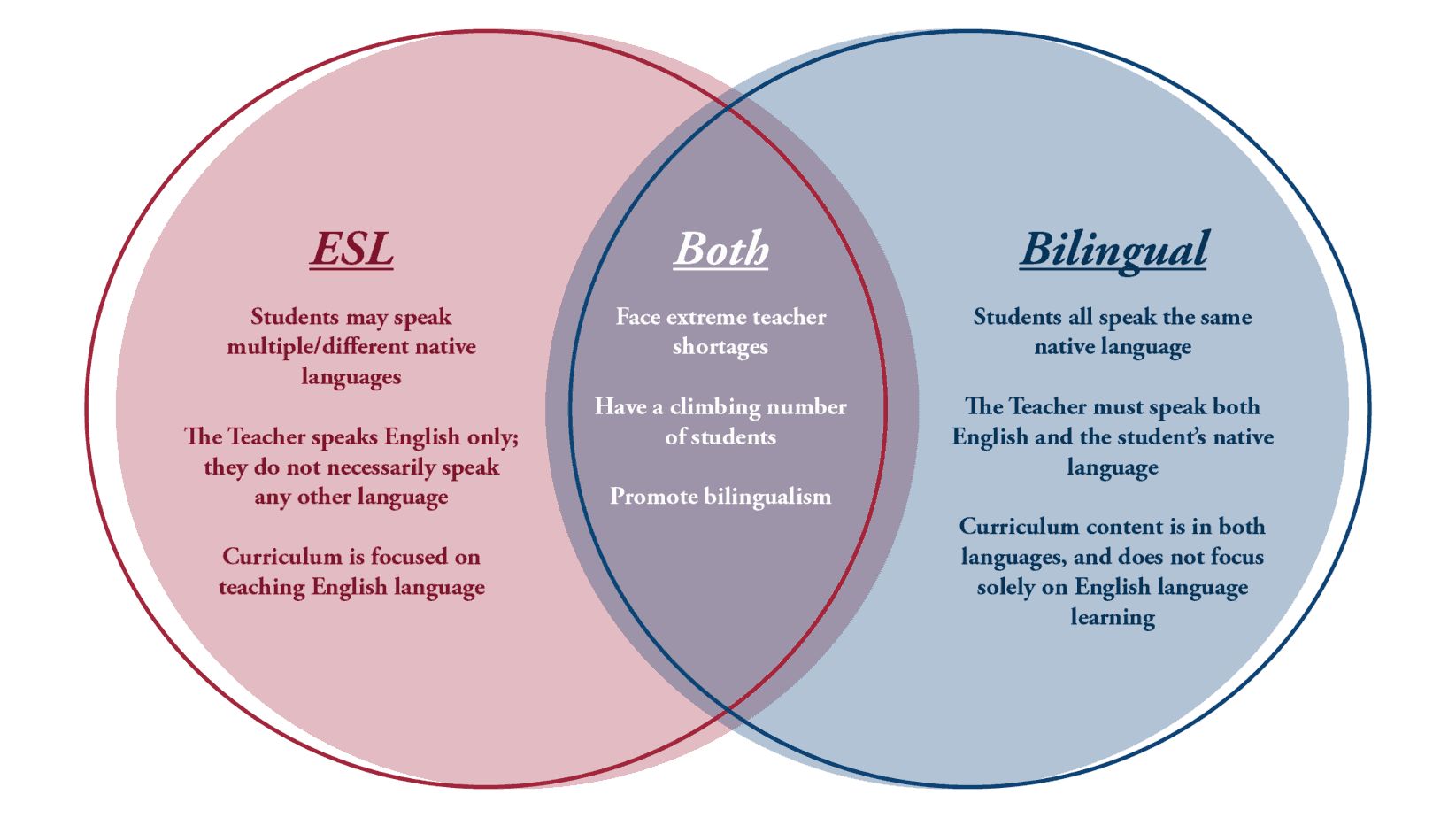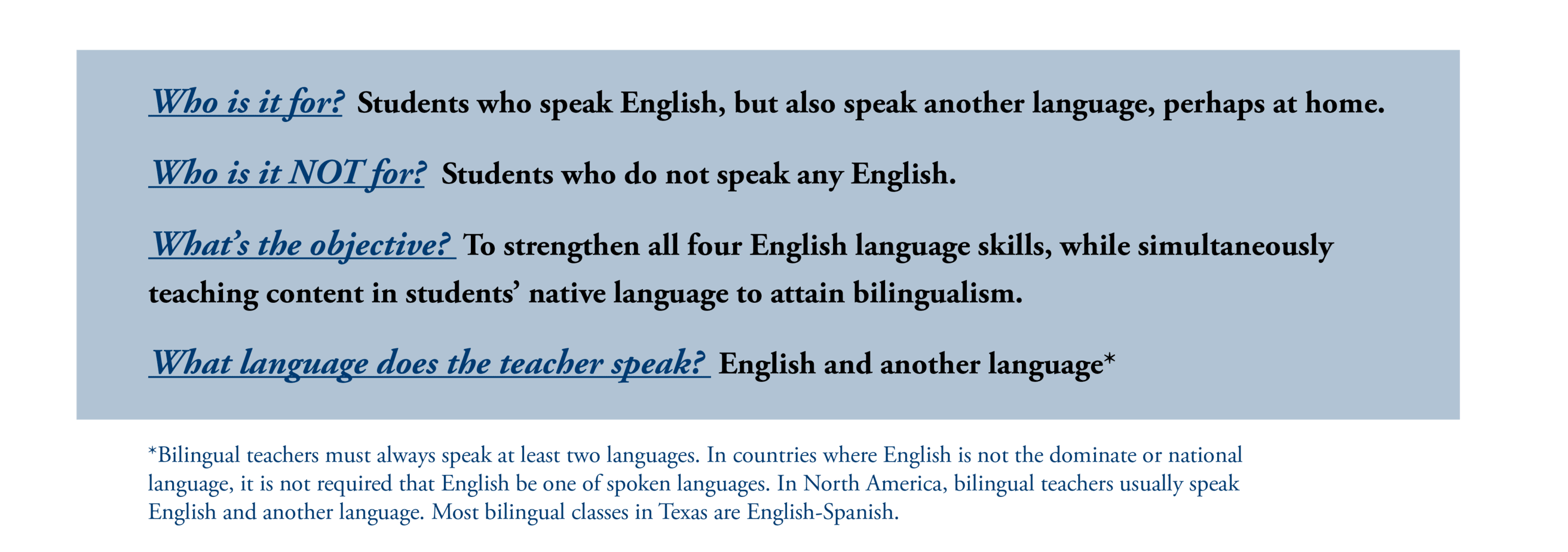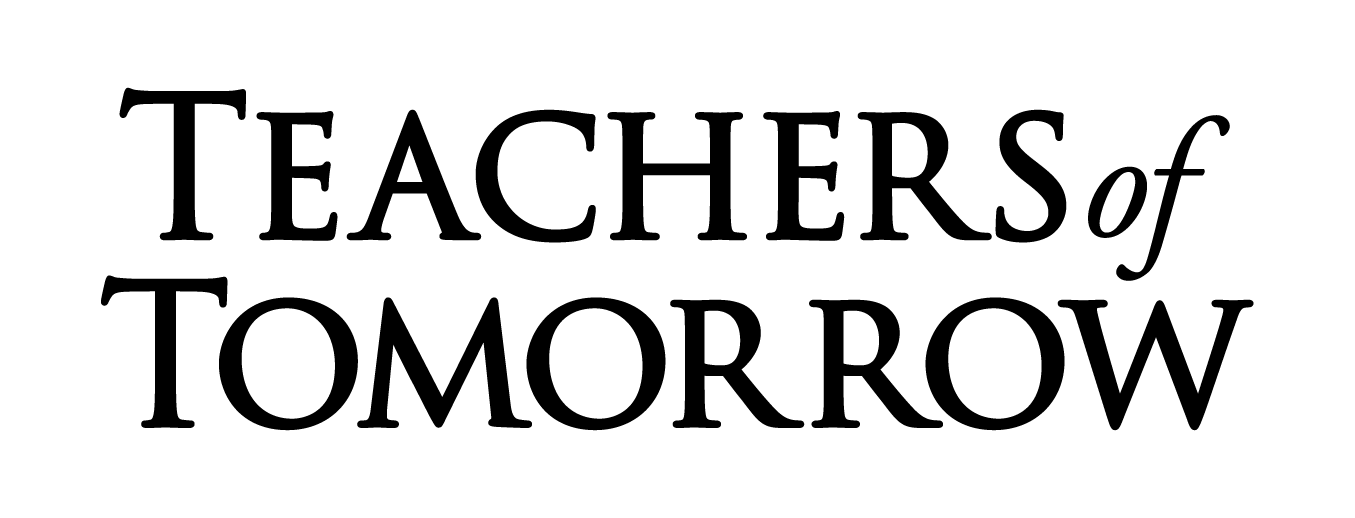It seems that many people use English as a Second Language (ESL) and Bilingual Education are one in the same, but they most assuredly are not. To help understand the differences, use the Venn Diagram below.



ESL programs help students who have limited English proficiency. The objective is to help students who do not identify English as their primary language learn English. These programs are extremely important, as the teacher strives to help students acquire English proficiency in order to succeed academically in English-based curriculum schools.
It’s important to note that the students in the class may not all share the same native language. For this reason, the teacher addresses the class only in English. The coursework in the program focuses on teaching the four language skills: reading, writing, speaking, and listening.
Many ESL students come from countries outside North America or celebrate different cultures. ESL teachers also strive to help students integrate into society and understand local customs, norms and values, while not replacing students’ own customs, norms, and values.
The importance of ESL is reflected in the fact that many districts even require all elementary teachers to have an ESL certification. You’ll want to make sure to research your top choice school to determine if you need ESL.


Bilingual Education teachers instruct in two different languages. The educator focuses on teaching content in both languages, such as geography, history, math, etc. While English is used as one language of instruction, students are not specifically taught English language lessons. By incorporating both the use of English and the students’ native language equally, their English language skills will continue to develop and strengthen.
The goal of bilingual classroom instruction is to help students become fluent in both languages.
Like ESL classrooms, students may also come from different cultural backgrounds. Teachers should be mindful of this and help all students feel comfortable, respected and valued in the classroom.

Both ESL and Bilingual Education teachers are in high demand. In a rapidly diversifying world, the use of English is on the rise. Since 1965, the number of immigrants in the U.S. has quadrupled; this means many students are entering our school systems without the simple tools needed to succeed, such as understanding the language of instruction – English. One out of every four students speak a language other than English in their home and our school systems are struggling to provide every student with teachers they need. Every student is equally important, and ESL and Bilingual teachers truly go above and beyond to meet the needs of all our students.

Here at Texas Teachers, we understand the importance and value of ESL and Bilingual Teachers. Mexican immigrants represent the largest group of U.S. immigrants, which is why our efforts are primarily focused on certifying more English-Spanish bilingual teachers. While there is a 50% increase in the need of these teachers, only 20% of the need has been met. If you’re ready to help Texas Teachers close the gap, apply to become an ESL or Bilingual Education teacher today. Every certified teacher brings us one step closer.

If you need more inspiration to become an ESL or Bilingual teacher, both of which promote bilingualism, check out this list of qualities attributed to bi- or multilingual speakers:
- Increased chance of getting hired
- Higher salary
- Advanced cognitive skills
- Bridges cultural and heritage gaps
- Easier to learn additional languages
- Improved pragmatic skills
- Multicultural sensitivity



